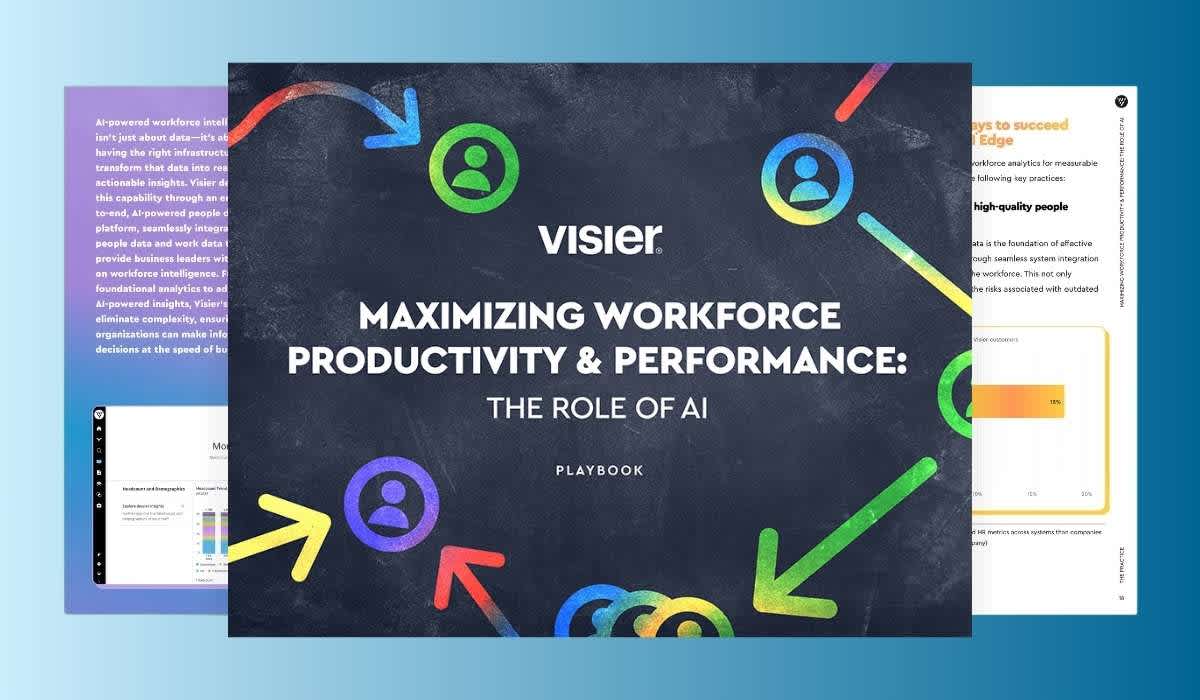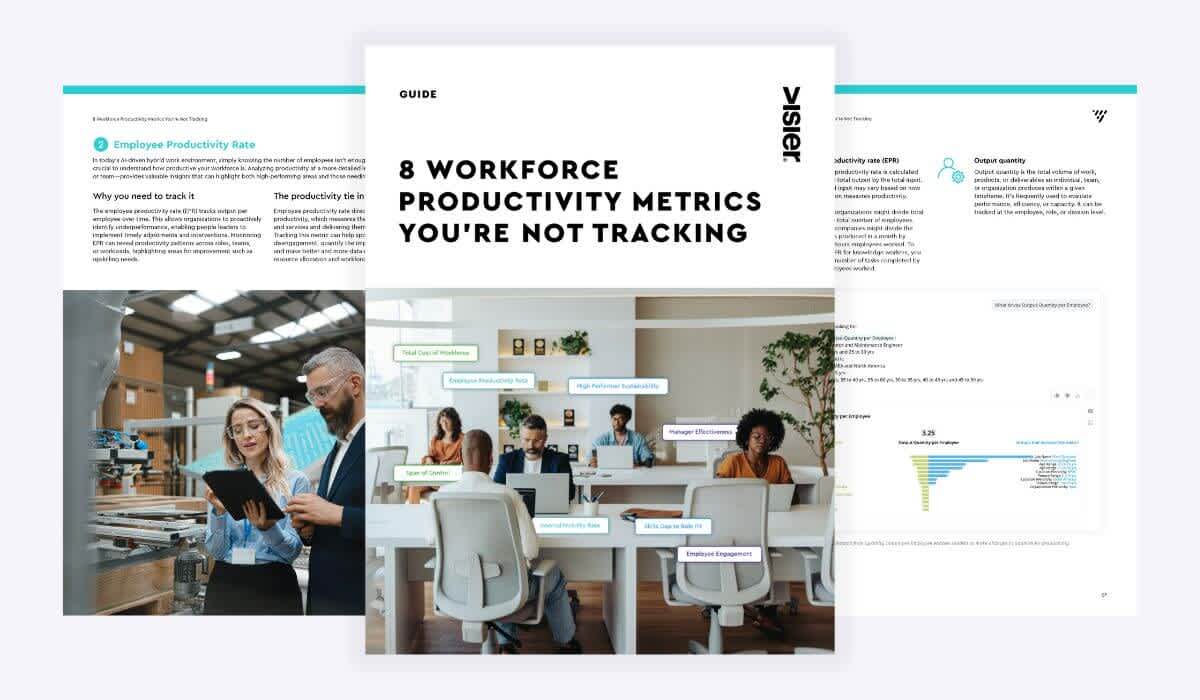Quick, act busy! New research shows many workers admit to 'productivity theater'
A new survey report on "productivity theater." Some employees are spending up to half a week on trying to look busy instead of actually doing any work. Read the reasons why in this new survey report.

At a time where many employers are taking measures to cut down on costs while driving increased productivity from existing staff, there is a risk that the added pressure on overburdened employees could result in artificial productivity, harming both the organization and the workers. Whether motivated by fear of layoffs or sheer exhaustion, opting for tasks that are more visible than others might be prioritized by employees over those that make an actual impact on the business. This performative busy work is a phenomenon we call “productivity theater.”
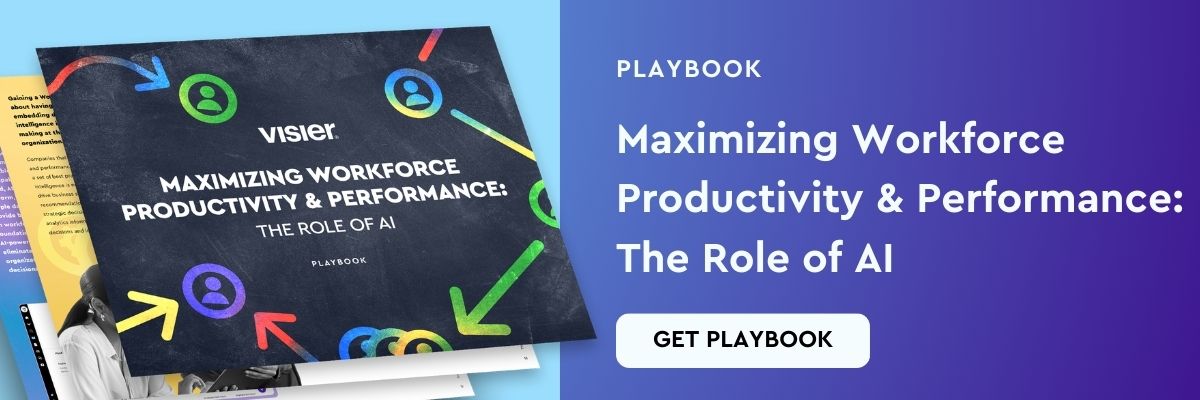
What is productivity theater?
Productivity theater occurs when employees prioritize performative work over more valuable tasks. Here, performative work refers to activities that mostly create the appearance of busily generating product and value rather than contributing to meaningful business results. In small doses, this could be relatively harmless, but added up, it’s a true threat to a company's overall efficiency.
As the leader in people analytics, we wanted to find out why employees may feel pressured to “play productive” such as attending unnecessary meetings or spending excessive time on administrative tasks. In February 2023, Visier surveyed 1,000 U.S.-based full-time employees to better understand employees’ productivity theater habits and the factors that drive decision-making in the workplace.
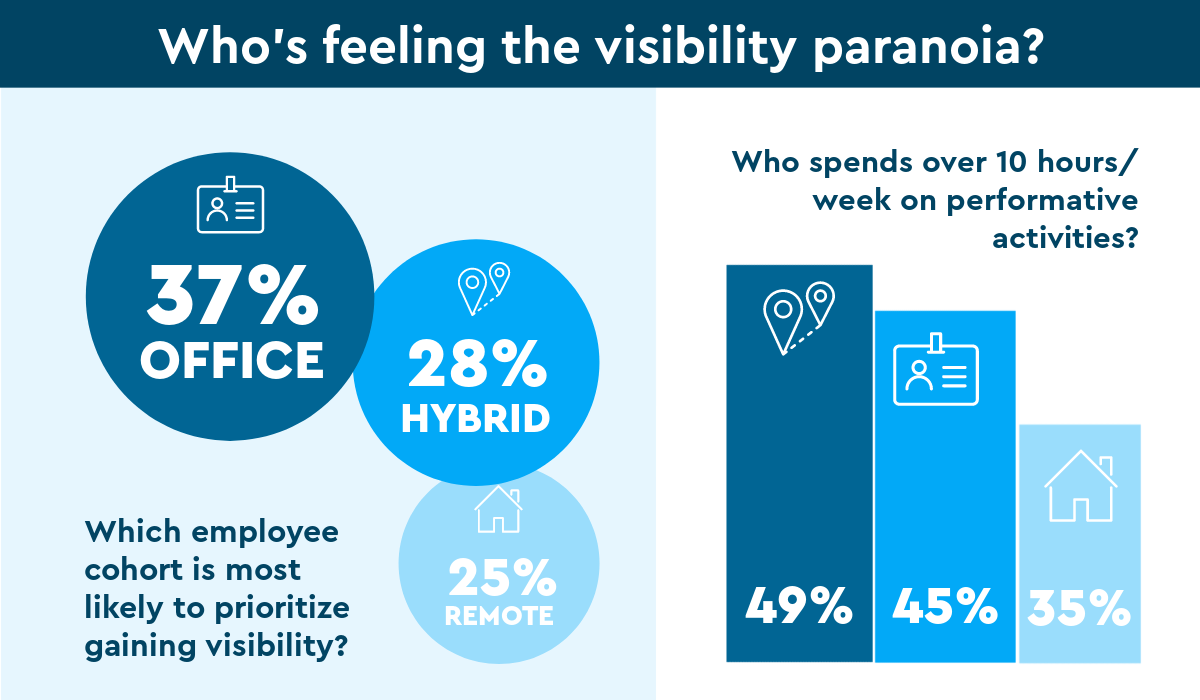
In this article, we report on our findings that employees prioritize work that makes them visible to others—including performative work tasks. However, most workers aren’t acting this way with ill intent.
Read on for a peek behind the curtain and learn how you can transform theater into reality.
Performative work adds up — 43% of employees spend more than 10 hours a week on productivity theater tasks
Eighty-three percent of respondents admitted to engaging in at least one of the most common performative work behaviors we identified in the past 12 months. The percentage remained similar whether employees worked in a hybrid, in-person, or remote workplace. All of the top performative behaviors centered around communication hacks and embellishing responsiveness.
Top practiced performative work behaviors:
Responded to colleagues via email/instant message as promptly as possible, even though an immediate response was not necessary — 42%
TIE: Scheduled an email/message to be delivered at a future time — 36%
TIE: Attended a meeting that wasn’t necessary for me to attend — 36%
Kept my laptop screen awake while not actively working — 28%
Completed extra research for a project that wasn’t necessary — 23%
Asked someone to do a work task on my behalf so I could do something else — 17%
Exaggerated when giving a status update — 9%
Embellished my time card — 3%
So, who exactly do employees hope will notice these behaviors? Seven out of 10 respondents named their manager, followed by their peers (39%), their department leads (32%), and their company’s senior leadership team (29%).
Performative work may also be a byproduct of competitive spirit: 6 in 10 respondents are concerned about how their ongoing work performance compares to their peers.
Although some performative work behaviors, such as promptly responding to messages or attending extra meetings, are not inherently negative, they still have unwanted consequences on employee productivity and effectiveness levels. For example, time spent completing performative work could be reallocated to tasks more closely related to an employee’s core role or to downtime that allows workers to recharge and refocus.

In an average work week, our findings show that close to half of an organization is spending 1.25 days participating in work that “shows up,” rather than work they deemed meaningful. Do the quick math and that’s an exceptional amount of weekly time spent on performing. However, even for the other half of the organization, the pressure to appear “busy” is strong.
Time spent on performative work behaviors | Time spent attending unnecessary meetings | |
Less than 2 hours per week | 16% | 40% |
2-5 hours/week | 21% | 28% |
6-10 hours/week | 19% | 16% |
11-15 hours/week | 11% | 8% |
16-20 hours/week | 10% | 4% |
Over 20 hours per week | 22% | 4% |
Why do employees play productive? Visibility and professional success top the list

The threat of layoffs, the rising adoption of employee surveillance tools, and employers’ concerns about the sustainability of remote work arrangements place growing pressure on employees to demonstrate they’re busy and, therefore, valuable to the organization.
When it comes to work prioritization, a third admit they prioritize tasks based on what will make them look most visible to others, regardless of whether that work is actually valuable to the business, because they want to be seen as valuable to the business (49%), while nearly a third (30%) report prioritizing their work so that others know they’re working.
Clearly, visibility plays a major role in how and why employees go about their day. But what about performative work behaviors specifically? Why do 83% of respondents engage in these types of tasks for several hours (or even days) per week?
The top motivators cited for productivity theatrics
The leading reasons behind performative work behaviors aren’t necessarily exploitative—the lack of other work to do and wanting to avoid doing more work ranked lowest among motivators. In fact, most employees believe their performative behaviors are valuable for both business and professional success.
It’s important for my professional success — 64%
I want to appear more valuable to the business — 41%
I want to appear more valuable to my manager — 33%
My peers also engage in performative work and I don’t want to fall behind — 25%
I’m worried about my job security — 19%
I feel pressured by my workplace culture to feign busyness — 15%
I want to avoid doing more work — 8%
I don’t have other work to do — 6%
Oddly enough, in-person and hybrid employees were slightly more likely to say their workplace culture pressures them to feign busyness compared to remote workers, but that factor still didn’t break into their top five reasons. The recent rise of employee productivity-monitoring tools has had an interesting effect as well; employees whose employers use surveillance tools were also significantly more likely to select every factor above as a motivator behind their performative work behaviors than their non-surveillance counterparts (except not having any other work to do), highlighting the pressure to perform as strong in that particular sub-group.
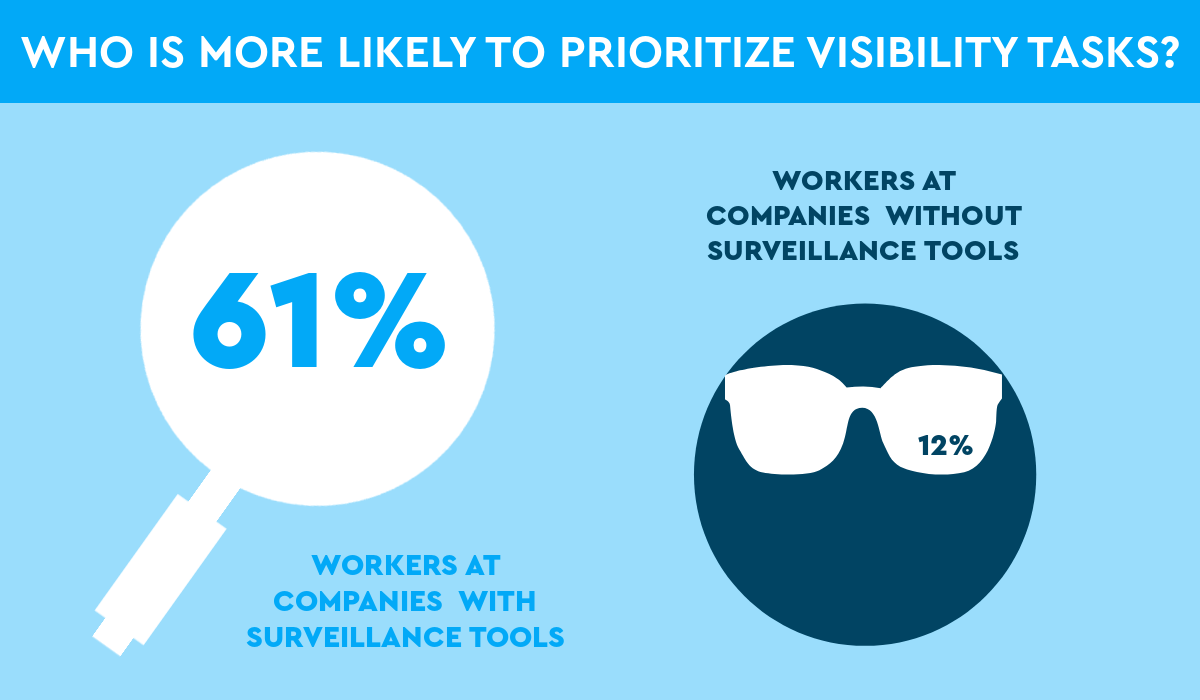
Employees with employers who use surveillance tools were also more than twice (and in some cases three times) as likely to commit the most egregious performative behaviors, like keeping a laptop screen awake while not working, asking someone to do a task for them, and exaggerating when giving a status update.
Let’s lower the curtain on productivity theater
The need to appear visible, responsive, and valuable plays a significant role in why employees engage in performative work behaviors, with habits less closely tied to recessionary-related fears like job security.
To stop the show, employers need to consider changes that encourage employees to prioritize tasks for the sake of providing value, rather than proving to others they’re online and busy. Likewise, when it comes to deploying new initiatives that could increasingly cause employees to compare themselves to their peers, employers should be mindful of how they communicate and roll out these programs, and intentionally measure the impact on employee motivation and well-being over time.
Most importantly, remember that every workforce looks different. To understand what will reduce performative work behaviors at your organization, first work to uncover the sentiments and motivators that already exist among your employees.

